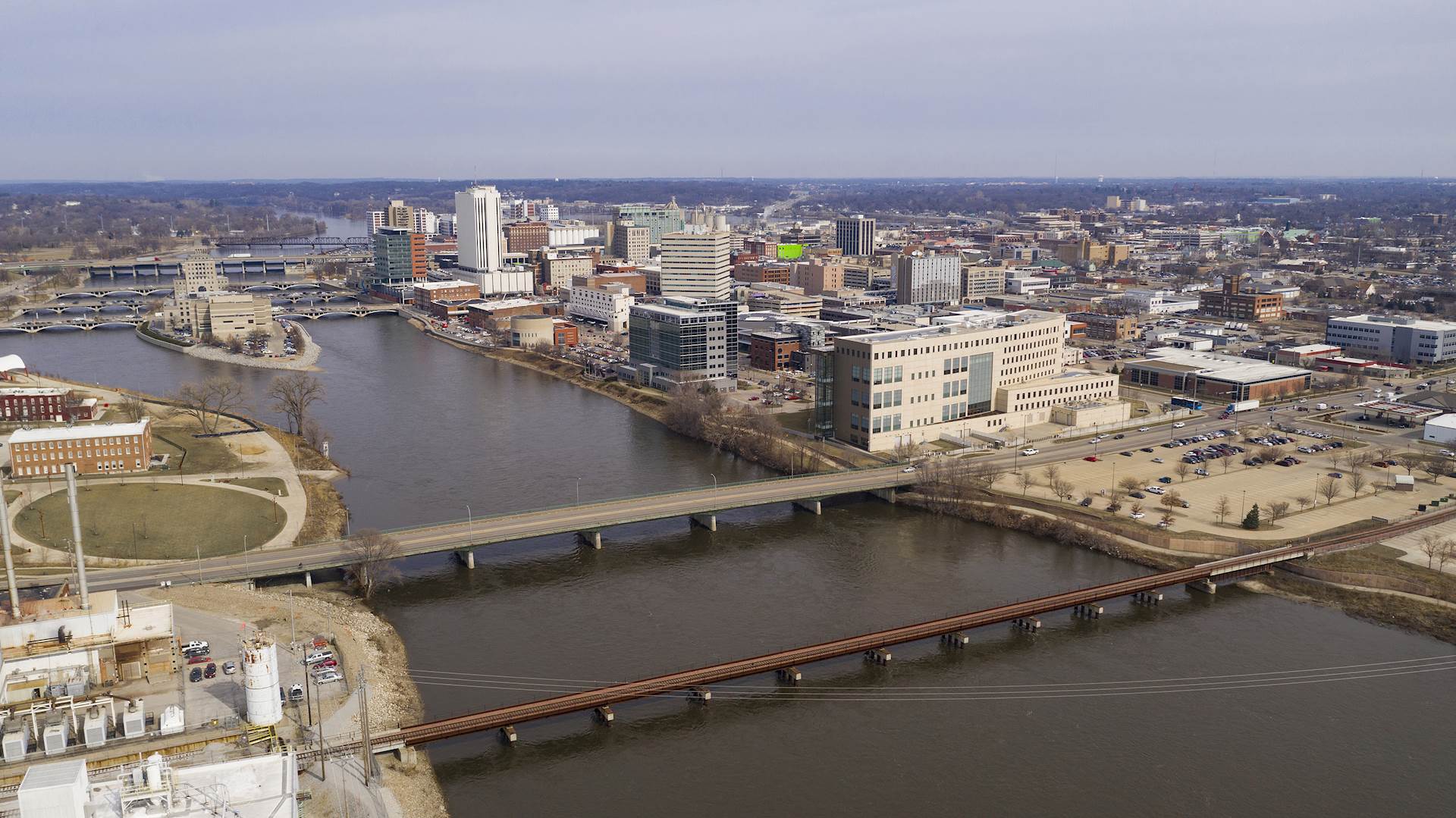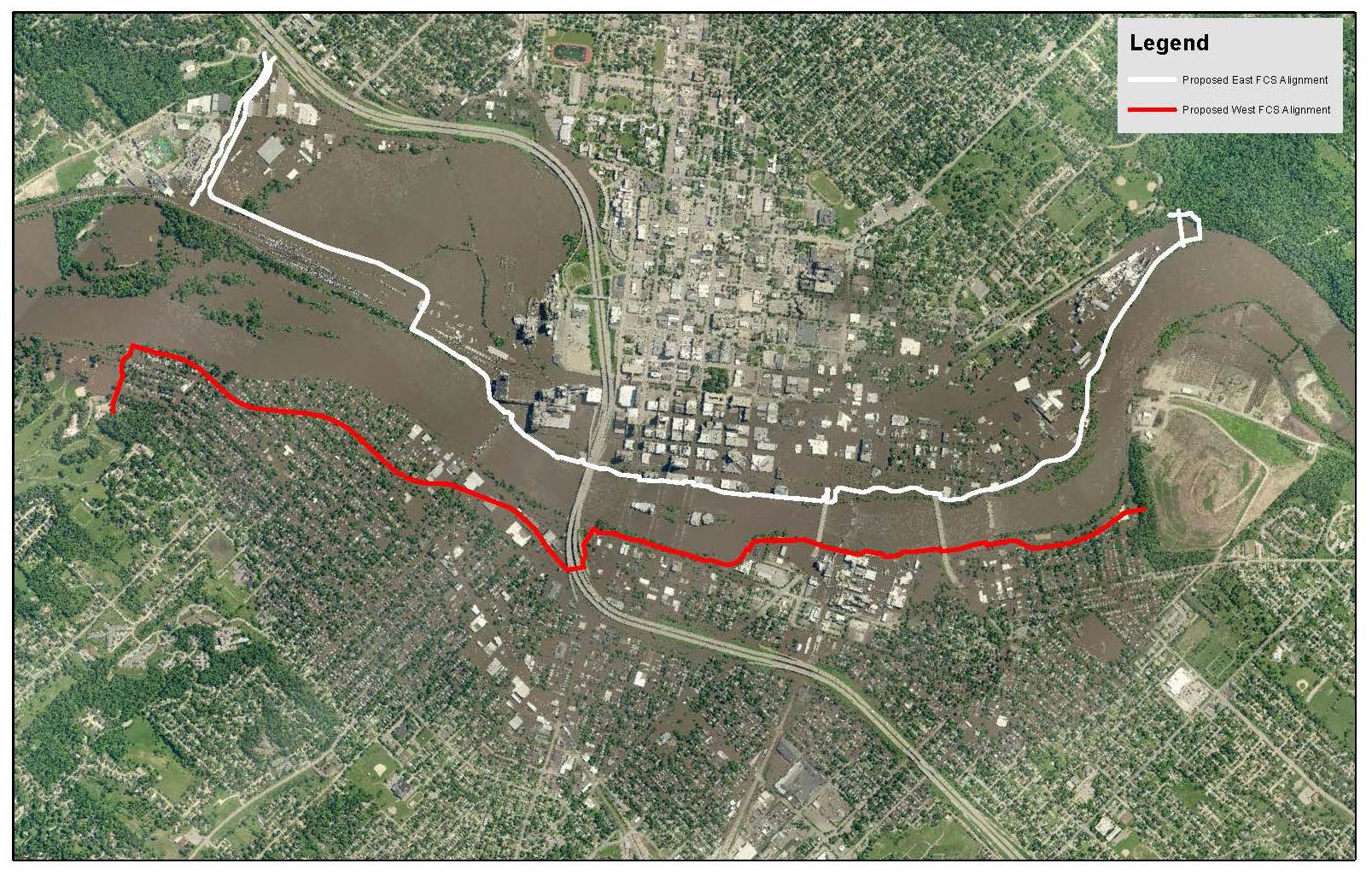
The Cedar River runs through the heart of downtown Cedar Rapids, Iowa. It divides downtown’s eastside city buildings and businesses from the west side’s homes, parks, historic areas and community amphitheater. Many floods have impacted the river city throughout its history, damaging infrastructure on both sides. However, on June 13, 2008, a catastrophic flood occurred, with an estimated flood frequency between a 500- and 1,000-year flood event. The river crested at the highest level in Cedar Rapids history: 31.12 feet. The floodwaters penetrated 10 square miles, inundating 14% of the city. This monumental flood affected 7,198 parcels — including 5,390 houses — dislocated more than 18,000 residents and damaged 310 city-owned facilities.
Following the flood, the U.S. Army Corps of Engineers (USACE) completed a feasibility study and a flood risk management report and appropriated funding for structural measures on the east side of the river. The USACE recommended Hanson to support a local engineering team for the planning and design of structural flood risk reduction for the river’s west side. The city recognized westside flood protection as critical to a vibrant downtown and, in 2015, awarded the westside contract with a 20-year funding strategy. Since 2015, multiple bid packages have been completed, and contract scope or fee amendments will follow through fiscal year 2035.

The city wanted to avoid developing a flood control system that isolated the river from the city. A visual connection to the river was preserved by adding demountable floodwalls. Demountable floodwalls present a unique design challenge of making certain the flood control system is in place and watertight during a significant flood, while conserving the city’s relationship with the river during day-to-day life. Using demountable floodwalls requires not only unique engineering structural and resiliency solutions but developing an early warning system and elaborate time-in-motion study that ensures these floodwalls and closure structures can be in place before a flood impacts the city.
 This 2008 orthographic map shows the proposed east (white) and west (red) flood control system alignments.
This 2008 orthographic map shows the proposed east (white) and west (red) flood control system alignments.
The design incorporates vibrant green infrastructure, including parks, a trail system and green stormwater detention. The flood control system has design elements to improve city life, such as replacing aging infrastructure and constructing unique pedestrian bridges that feature historical elements of the city. The system’s aesthetics include façade elements tied to the National Czech & Slovak Museum & Library and viewing platforms throughout the city.
HR Green Inc. and Hanson are responsible for the design of westside flood protection system consisting of Federal Emergency Management Agency (FEMA) property buyouts, levees, flood walls, pump stations and elevated bridge crossings. Hanson has provided an ongoing development of design criteria, geotechnical analysis and foundation design criteria for the entire west alignment, as well as comprehensive design, plans and specifications; a 25-mile Cedar River hydraulic model for ongoing floodplain permitting; a multidiscipline disaster risk reduction for each reach; internal technical and peer reviews; and an operation and maintenance manual for the west side. Hanson also is coordinating with the USACE and FEMA on restudy and map revisions for the east and west teams.
The Cedar Rapids flood control system’s design has required a complex collaboration between the city, separate eastside and westside design teams, the USACE, the Iowa Department of Transportation, the Iowa Department of Natural Resources and FEMA, along with multiple ongoing projects within the Cedar Rapids to revitalize the area.
Learn more about Hanson’s services for flood systems by contacting Jeff Tatarek at jtatarek@hanson-inc.com or Garrett Litteken at glitteken@hanson-inc.com.